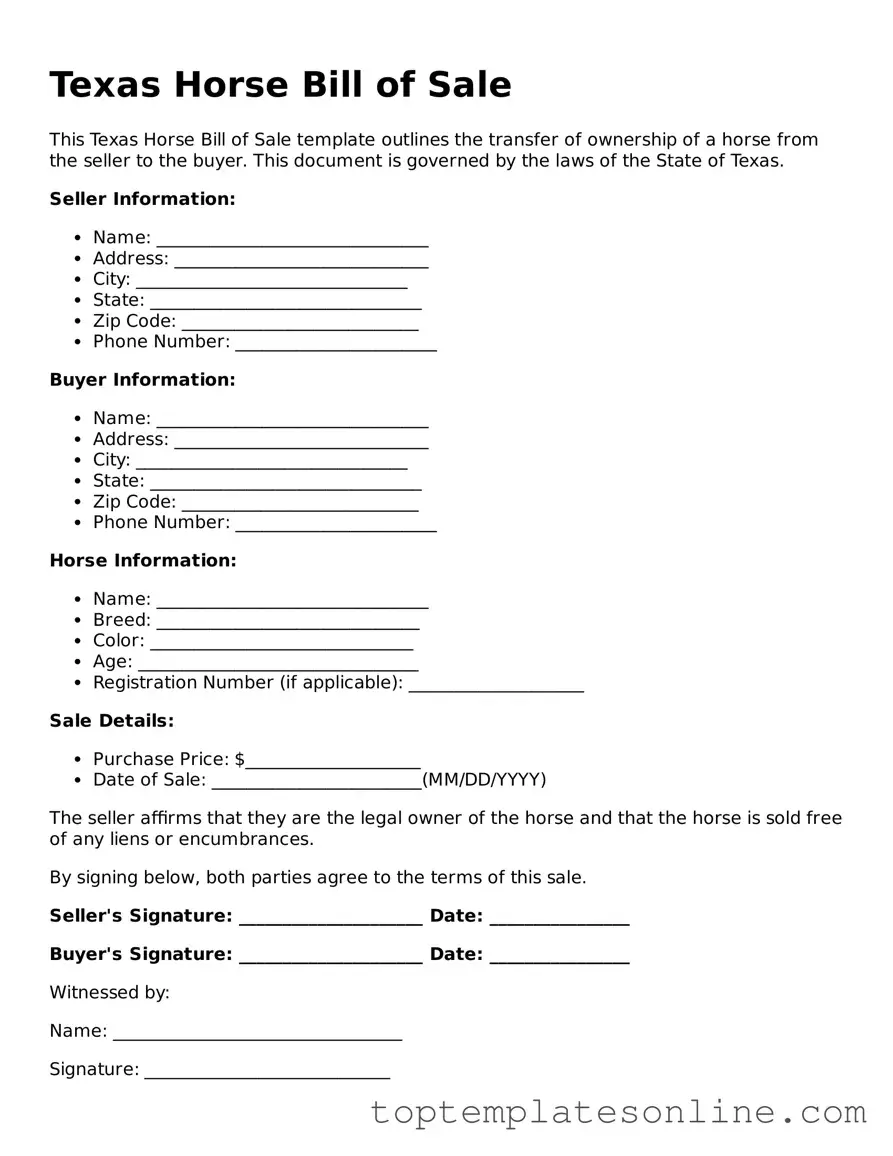Blank Horse Bill of Sale Template for Texas State
The Texas Horse Bill of Sale form is a legal document used to transfer ownership of a horse from one party to another. This form outlines important details about the horse, including its identification and sale price. Having a properly filled-out bill of sale protects both the buyer and seller in the transaction.
Customize Horse Bill of Sale Here
